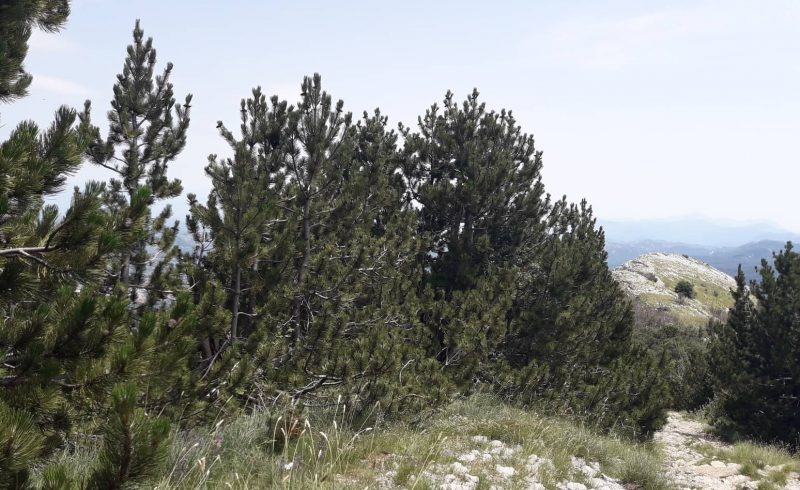
Javno preduzeće za nacionalne parkove Crne Gore sprovodi partnerski Projekat ”Ugrožene vrste i staništa Jadranskog područja” (Low Adriatic Species and Habitat – LASPEH), u okviru Programa prekogranične saradnje INTERREGIPA CBC. Jedan od rezultata Projekta biće izrada Studije konzervacije bora munike (Pinus heldreichii), koji se nalazi na području Jezerskog vrha u Nacionalnom parku Lovćen. Takođe, sprovešće se i minimalni zahvati na zaštiti i unapređenju postojećeg stanja šume munike.
Munika je crnogorična vrsta drveta iz porodice borova i tercijerni relikt i subendemit Balkanskog poluostrva. Najčešće naseljava strme, kamenite i stjenovite terene i obrazuje čiste i mješovite šume sa drugim četinarima i lišćarima. Zbog toga je i obučena u ‘’pancir’’, odnosno kod starijih stabala kora je ispucala tako da gradi mnogougaone pločice koje imaju izgled pancira. Stablo može dostići visinu od 30 metara, može biti 1 metar debljine u prečniku, dok je pri dnu često sabljasto savijeno..Munika je dobila ime po čuvenom njemačkom botaničaru Heldrajhu.
Na Balkanskom poluostrvu, pored Crne Gore, munika je evidentirana u Bosni i Hercegovini, Kosovu i Albaniji, na jugu do sjeverne Grčke, na istoku do planina Pirin i Slavianka i u zapadnoj Bugarskoj. Na Italijanskom poluostrvu vrsta se javlja u južnim Apeninima.
Bosnian pine – Pinus heldreichii Christ.
The Public Enterprise for National Parks of Montenegro is implementing a partner project of the Low Adriatic Species and Habitat (LASPEH) within the INTERREG IPA CBC. One of the results of the Project will be a Study of the conservation of Bosnian pine (Pinus heldreichii), which is located in the area of Jezerski vrh in the National Park Lovćen. Also, minimal measures will be taken to protect and improve the existing state of the Bosnian pine wood.
Bosnian pine is a conifer species from the family of pine trees and a tertiary relic and subendemic of the Balkan peninsula species. It`s most frequent settlements are steep, rocky terrain where it forms Bosnian pine woods and mixed forests with other conifers and hardwoods. The older representatives have a specific bark that looks like the tree has a bullet proof vest, because the tree bark is cracked so that it builds many polygonal tiles that have the appearance of skin. The tree can reach a height of 30 m, and a thickness of 1 m in diameter while the bottom of the tree is often saber folded. The Bosnian pine (Heldreich`s pine) was named after the famous German botanist Heldreich.
In the Balkan Peninsula, in addition to Montenegro, the Bosnian pine is recorded in Bosnia and Herzegovina, Kosovo and Albania, in the south to northern Greece, in the east to the Pirin and Slavianka mountains and in western Bulgaria. In the Italian Peninsula species occur in the southern Apennines.